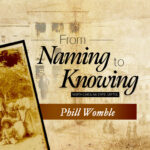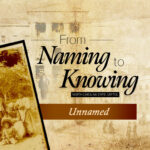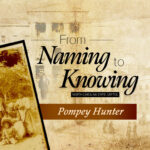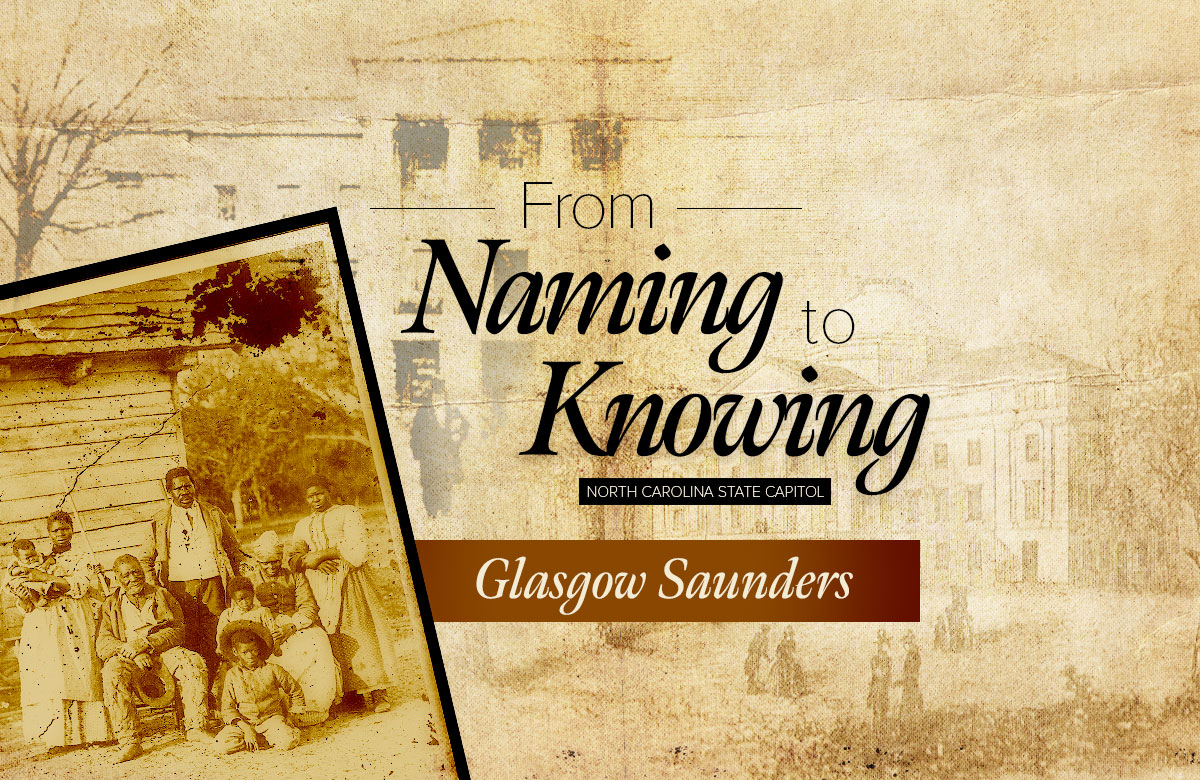
Glasgow Saunders was listed on the 1834 Report of the Commissioners appointed to superintend the re-building of the State Capitol. Glasgow was highly paid for this project; his labor was valued at $1.00 per day, double what the labor of most of the enslaved men generated. Listed below Glasgow are two other names: Peter Saunders and Washington Saunders. These two were compensated significantly less than Glasgow and the other enslaved men, only 15 and 20 cents respectively. Washington Saunders listed here was most likely George Washington Hayes, the son of Glasgow Saunders and Charlotte Hayes. Washington was born around 1827, which means in the 1834 Report, he would have been around 7 years old. His young age explains his low compensation; he may have been assisting his father Glasgow in his work. As we have not yet located Peter elsewhere in the historic record, we are left to wonder who he was or if he was also related to Glasgow.
Glasgow worked on the Capitol project until at least 1837. A receipt from “27 July 1837” allocates $34.50 compensation for Glasgow’s labor and is signed by David Paton, the chief architect of the Capitol project.
Glasgow Saunders was likely enslaved by Romulus Saunders by the 1830s (there are some indications that Glasgow might have been enslaved by someone else in Raleigh during the early 1800s). A receipt from the Capitol’s construction shows Romulus Saunders being compensated for the labor of people that he enslaved who were working on the Capitol project. The receipt states, “Capt Scott – will oblige me by calling and receipting for the wages of my [..] at the State House for the month […] December 29 37 R.M. Saunders.”
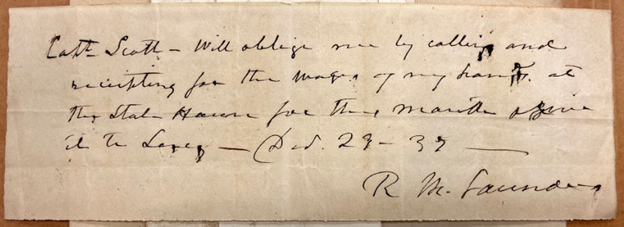
Romulus was a member of North Carolina’s legislature, a Congressman, and one of the appointed commissioners on the Capitol’s construction project. Glasgow lived at Elmwood, Romulus Saunders’ Raleigh home, which was located off Hillsborough Street a few blocks west of the Capitol. Elmwood was purchased by Romulus Saunders in the early 1830s, after he rented the home for a time.
The 1830 census showed ten people residing in the home of Romulus Saunders in Wake County and also noted fifteen enslaved people in his household.


Mary Walker was an enslaved woman who self-emancipated from the Cameron family in Raleigh. The Camerons were the neighbors of Romulus Saunders on Hillsborough Street. After she escaped bondage, Mary noted Glasgow in her correspondence as she sought information about her family, still enslaved in Raleigh. In an 1856 letter, Mary stated that she trusted Glasgow with helping her make contact with her mother Silla – still enslaved by the Camerons in Raleigh. Mary also noted that Glasgow was one of the “colored deacons of the Baptist Church.” Mary later recalled that her mother was part of a network of enslaved people who met at night to worship. Perhaps Glasgow was also a part of this network. It’s evident that Glasgow was respected and well-known in the local community, but much of his life remains unknown.
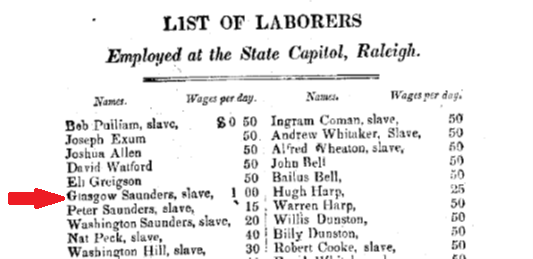
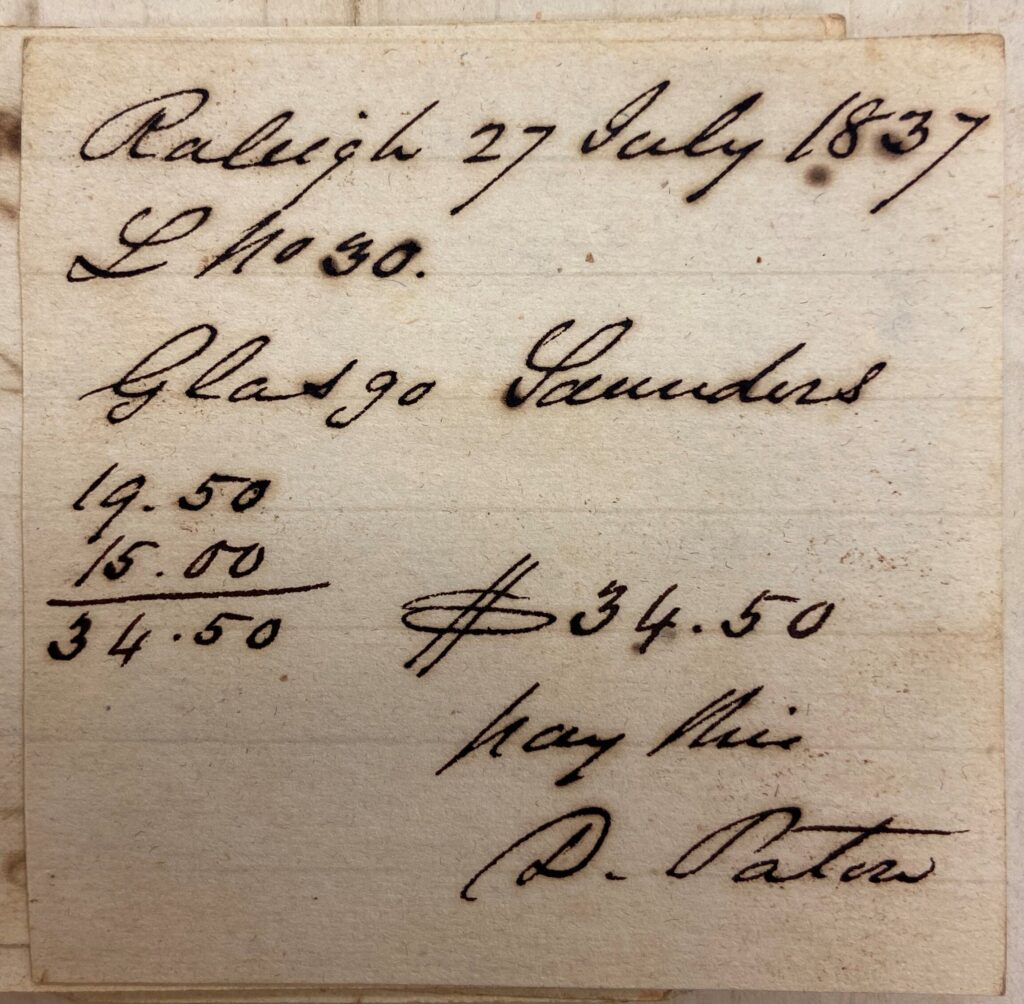
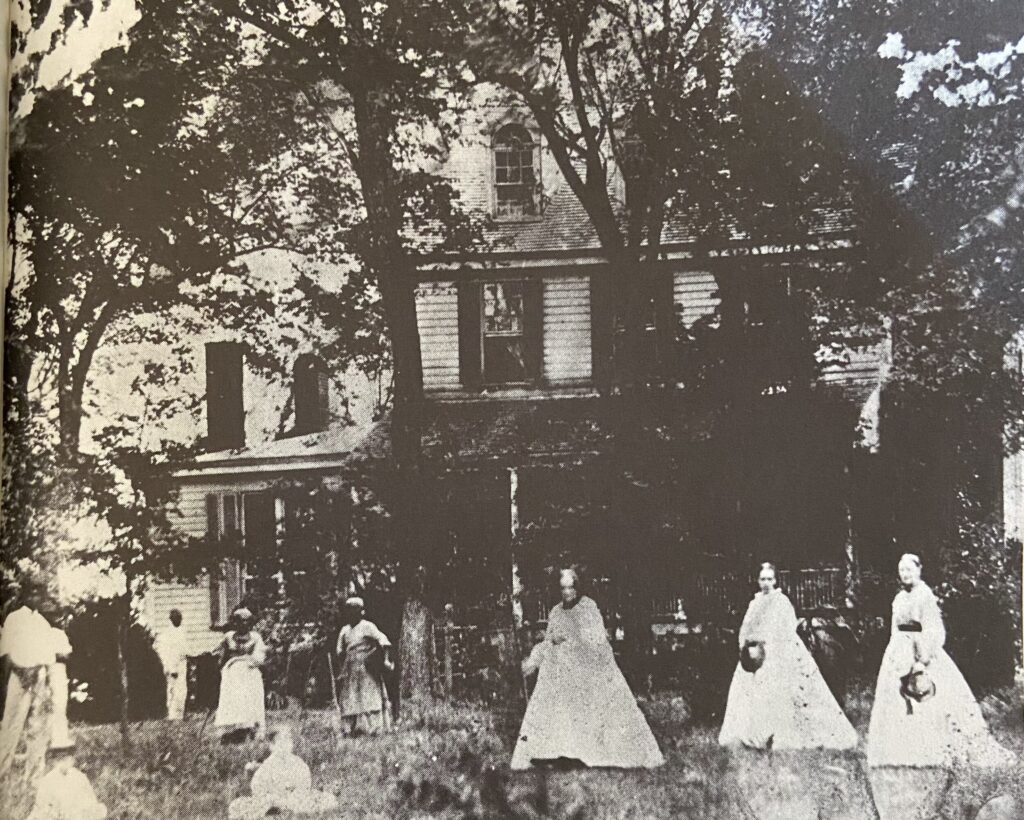
References:
- Census Of The United States, 1830-50, Record Group: Records of the Bureau of the Census, The National Archive, Washington, D.C.
- “Elmwood,” Elizabeth Reid Murray Collection, Agriculture and Environment, 1800-2004, Olivia Raney Local History Library Repository, Wake County Public Libraries.
- “Elmwood,” National Registry of Historic Places Nomination Form, https://files.nc.gov/ncdcr/nr/WA0013.pdf.
- Nathans, Sydney. To Free a Family: The Journey of Mary Walker. Harvard University Press, MA, 2012.
- Report of the commissioners appointed to superintend the re-building of the State Capitol. Philo White, Printer to the State, Legislature of North Carolina, 1834. Accessed in the Raleigh History Collection, State Archives of North Carolina.
- State Capitol Construction Records, Treasurer’s and Comptroller’s Papers. State Archives of North Carolina.
